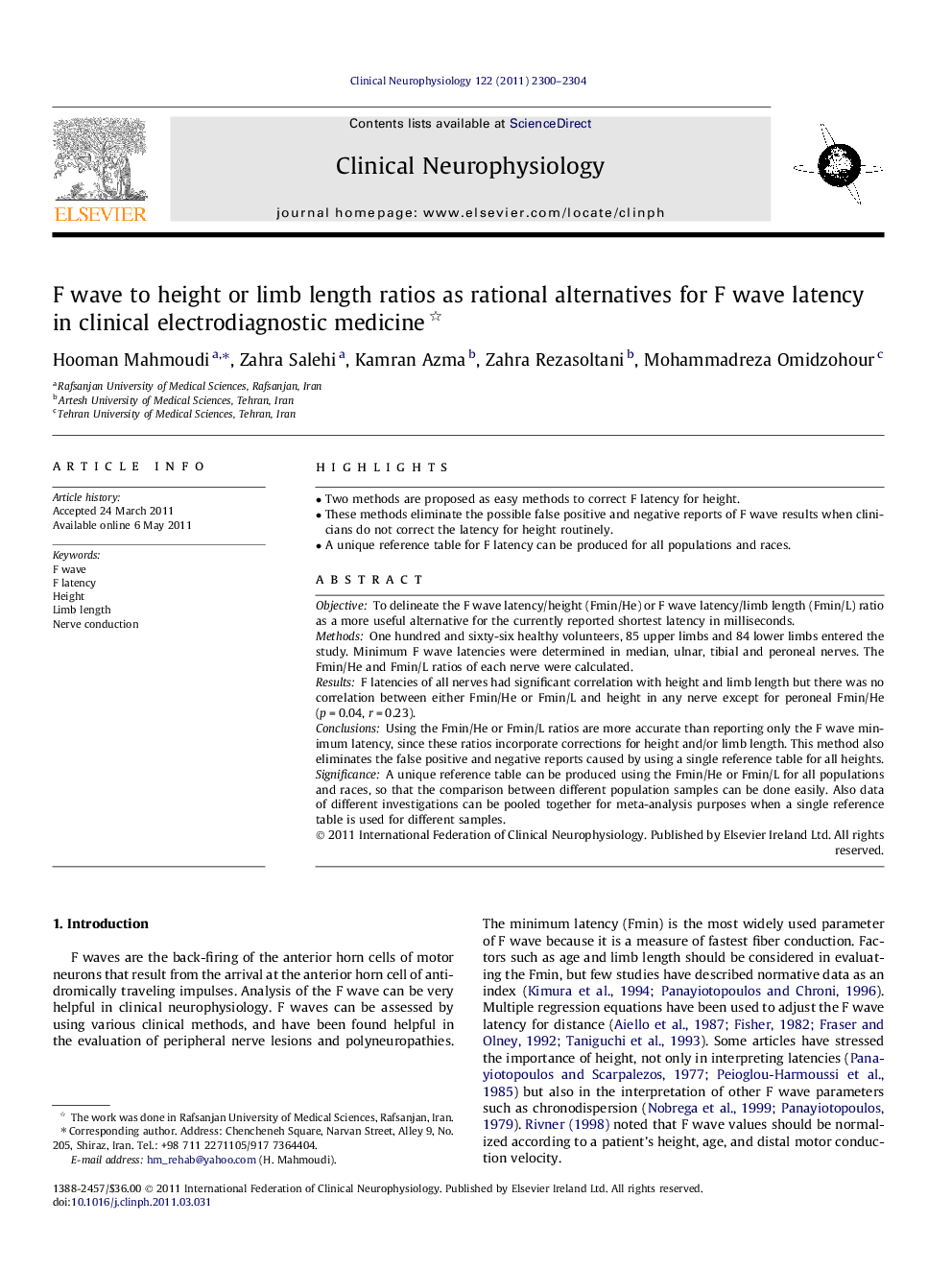| Article ID | Journal | Published Year | Pages | File Type |
|---|---|---|---|---|
| 3043811 | Clinical Neurophysiology | 2011 | 5 Pages |
ObjectiveTo delineate the F wave latency/height (Fmin/He) or F wave latency/limb length (Fmin/L) ratio as a more useful alternative for the currently reported shortest latency in milliseconds.MethodsOne hundred and sixty-six healthy volunteers, 85 upper limbs and 84 lower limbs entered the study. Minimum F wave latencies were determined in median, ulnar, tibial and peroneal nerves. The Fmin/He and Fmin/L ratios of each nerve were calculated.ResultsF latencies of all nerves had significant correlation with height and limb length but there was no correlation between either Fmin/He or Fmin/L and height in any nerve except for peroneal Fmin/He (p = 0.04, r = 0.23).ConclusionsUsing the Fmin/He or Fmin/L ratios are more accurate than reporting only the F wave minimum latency, since these ratios incorporate corrections for height and/or limb length. This method also eliminates the false positive and negative reports caused by using a single reference table for all heights.SignificanceA unique reference table can be produced using the Fmin/He or Fmin/L for all populations and races, so that the comparison between different population samples can be done easily. Also data of different investigations can be pooled together for meta-analysis purposes when a single reference table is used for different samples.
► Two methods are proposed as easy methods to correct F latency for height. ► These methods eliminate the possible false positive and negative reports of F wave results when clinicians do not correct the latency for height routinely. ► A unique reference table for F latency can be produced for all populations and races.
